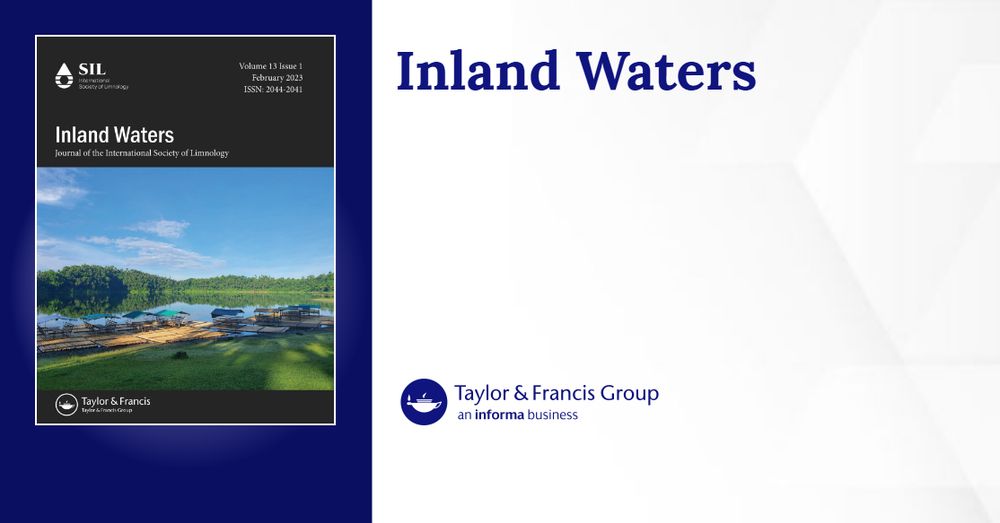
@acastrocastellon.bsky.social
Now my paper is open access!
Hormesis and antagonism in low-dose Phalaris allelochemicals during Microcystis control: Inland Waters: Vol 15, No 1 www.tandfonline.com/doi/abs/10.1...
@quantumfreshwaters.bsky.social

@acastrocastellon.bsky.social
Now my paper is open access!
Hormesis and antagonism in low-dose Phalaris allelochemicals during Microcystis control: Inland Waters: Vol 15, No 1 www.tandfonline.com/doi/abs/10.1...
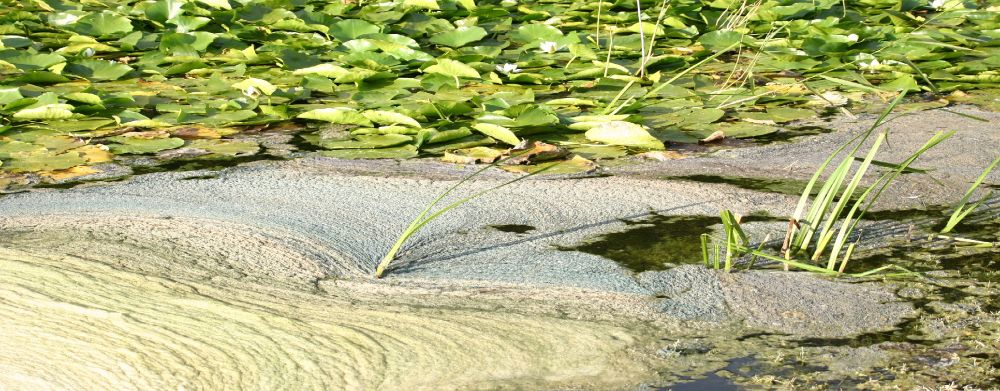
An algal bloom on a nutrient enriched lake encroaches into the Nymphaea alba and Chara hispida beds, causing plant dieback. Your work will develop a novel, targeted analytical method to allow us to rapidly screen samples to determine the molecular composition of the dissolved organic nutrients in these and other waters. These provide a critically important but overlooked nutrient resource driving ecosystem damage and biodiversity decline in waterbodies. We currently lack a unified technique that can rapidly screen samples in a targeted manner. You'll likely be highly motivated, enjoy both field and laboratory work, and be a good analytical chemist with attention to detail who is keen to make your mark through novel method development. Give Ian a ring or send him an e.mail (ian.d.bull@bristol.ac.uk), or contact me here or via my e.mail penny.johnes@bristol.ac.uk. We have a large team on the ERC REFRESH programme that you will be joining, along with two other PhD students due to start at the same time. Great team and learning opportunities.
Great opportunity: full @ukri.org funded PhD Studentship with 4 years fees, stipend (£19237 pa) and full Research Training Support Grant, working with Prof Ian Bull, Director of the National Environmental Isotope Facility and my
@ercrefresh.bsky.social team! Starts 10/2025 shorturl.at/AJREj 🧪
🌿 Experiencias sostenibles entre las actividades de los cursos de verano de #LaComplutense
Demostración en el Club de Golf La Herrería ⛳️, de acciones como la #reintroducción de #pollos de #lechuza y la puesta en libertad de #cernícalos comunes
#conocimiento, #naturaleza y #compromisoambiental 💚
@acastrocastellon.bsky.social
12.07.2025 12:14 — 👍 1 🔁 0 💬 0 📌 0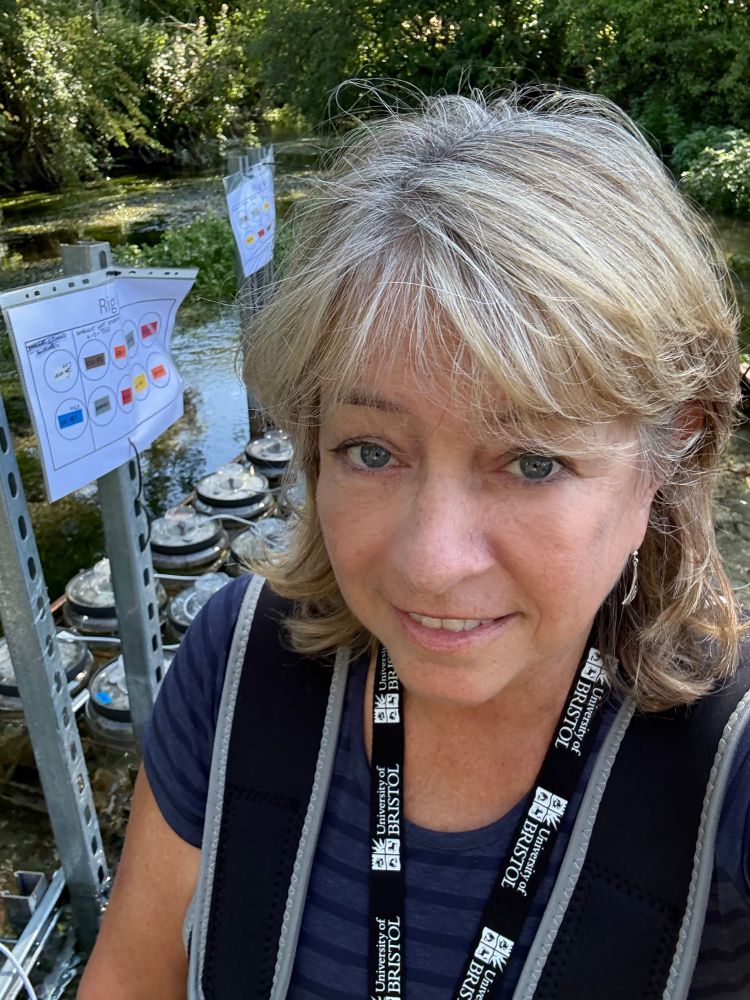
PI setting up for 48 h sampling at our chalk stream site.

Dr Charlotte Briddon transferring our biofilm frames to our clay stream site to start incubation. Each frame holds 45 glass slides, and we need c. 450 for each experiment.
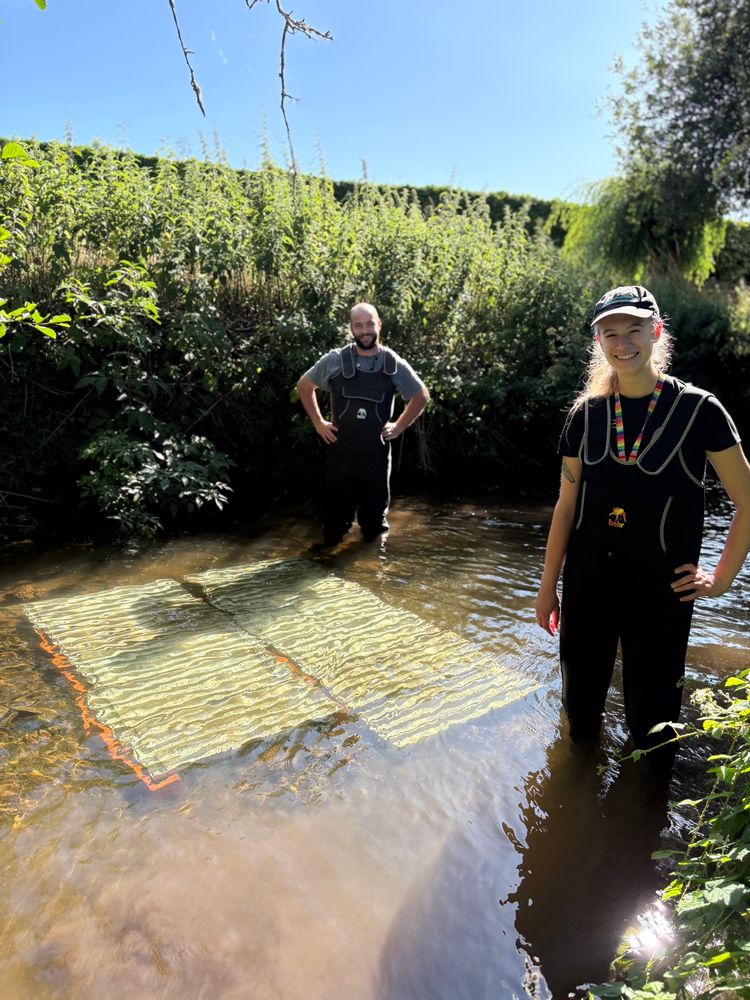
@jameslmcdonald.bsky.social from ERC REFRESH and @sydneyenns.bsky.social from NERC QUANTUM deploying the frames in a sunny part of the stream.
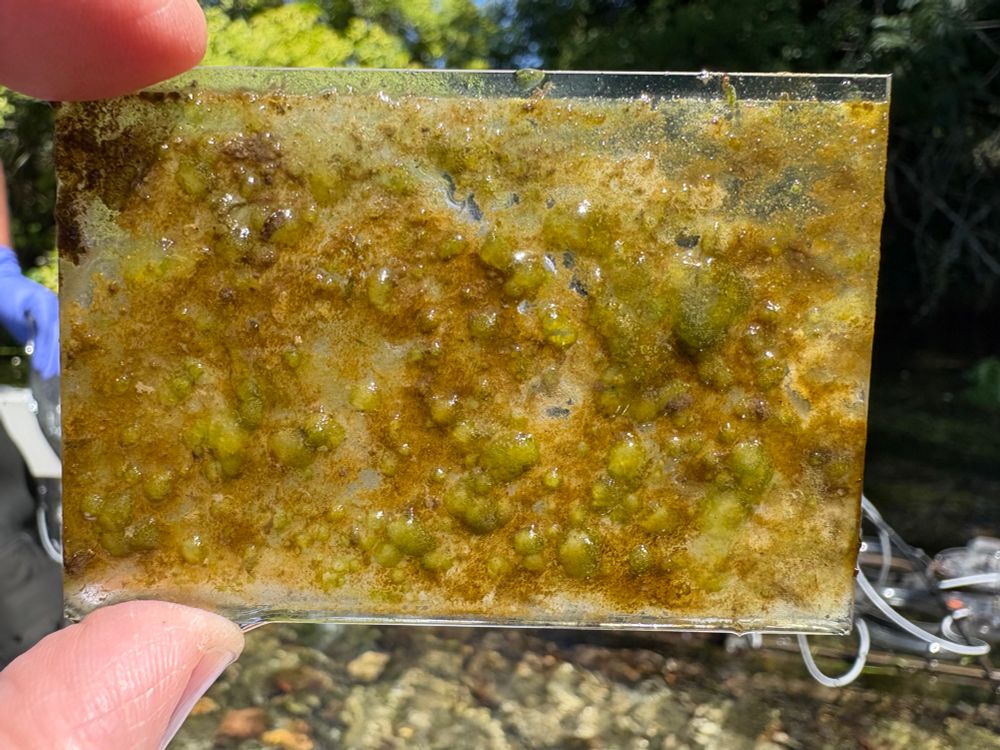
A biofilm coated slide at 48 h sampling time point.
Four time points out of 6 completed in our first experiment (chalk stream) and it's all going well. Next stop is deployment of the biofilm frames in our clay stream to develop biofilms for experiment 2 in 3 weeks time. Great help from @sydneyenns.bsky.social from our @ukri.org QUANTUM team. 🧪
11.07.2025 09:52 — 👍 5 🔁 1 💬 0 📌 1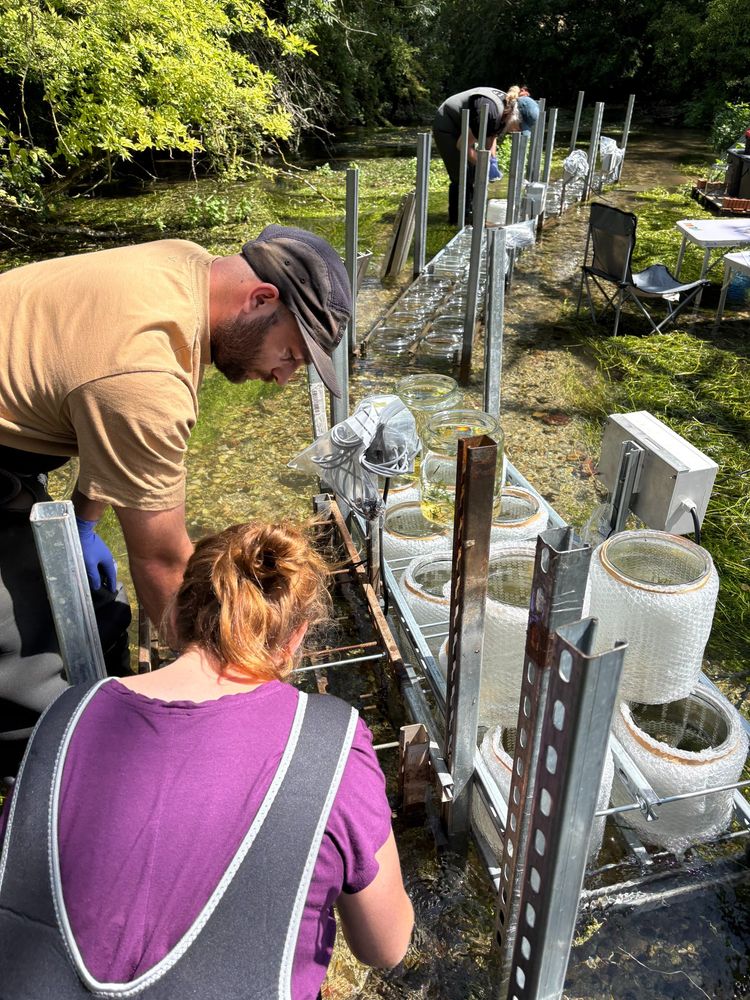
Meet the team! Drs Charlotte Briddon and @jameslmcdonald.bsky.social, working on setting up the motors to drive the paddles in our warming (bubble wrap jackets, elevated higher in the water column) and warming plus high (double the rpm) flow velocity experiment. Further along, Dr @acastrocastellon.bsky.social from our @ukri.org NERC QUANTUM programme is setting up the jars for our ambient temperature with stirring experiment in this classic chalk stream. The catchment comprises calcium carbonate rich chalk, flows to the river are dominated by groundwater and deeper throughflow, and the stream ecosystem supports Ranunculus spp. (water crowfoot), Callitriche spp. (starwort) and Rorippa nasturtium-aquaticum (watercress) along with a native brown trout population. How will biotic response rates to isotope dosing of 13C15N labelled compounds in this alkaline, and gin-clear stream contrast with those in a more turbid clay stream (experiment 2) and dystrophic peatland stream (experiment 3). We look forward to finding out!
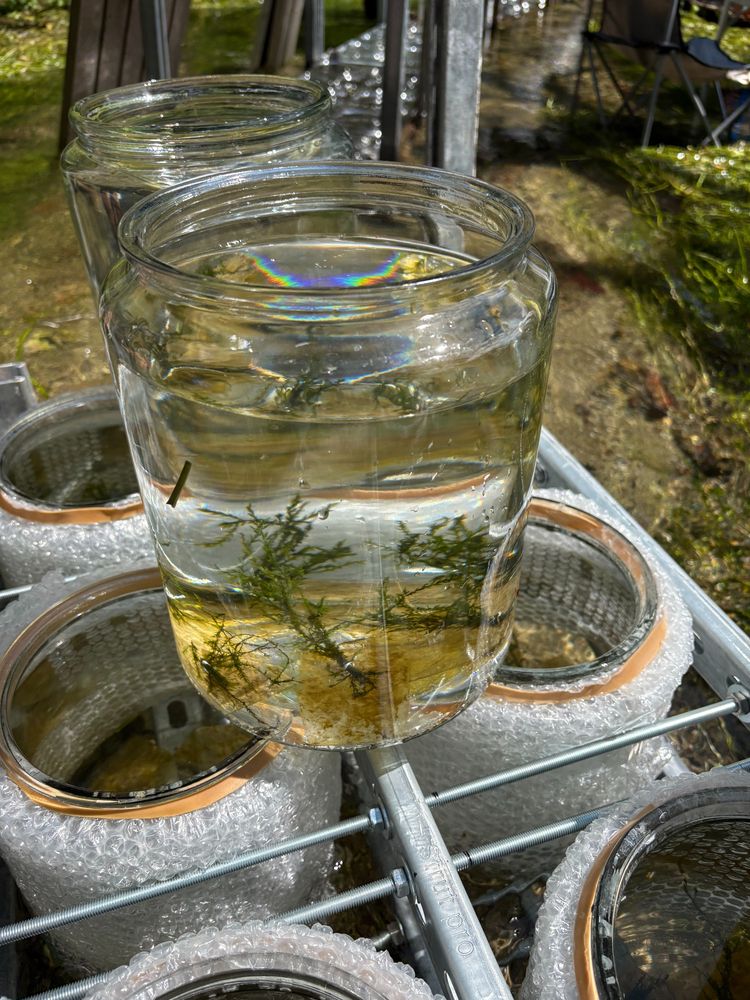
Each jar contains biofilms cultivated in the stream prior to each experiment, and mosses (Fontinalis antipyretica) which are ubiquitous in UK rivers and streams. Their lack of rooting structure makes them ideal for these isotope dosing experiments. Later on in the programme we will introduce benthic chambers and endemic higher plants, but these 6L mesocosms are too small to accommodate them.

The final set up, the evening before the first sampling at time point 0. We then sample at 1.5 h, 6 h, 24 h, 48 h, 96 h (at which point we introduce snails to graze off the biofilms and bryophytes) and 192 h. So many moving parts to go wrong, and each jar 9x 3 replicates) receives a different dual-labelled DOM compound at 1% enrichment of N over background. These are not enrichment nor depletion experiments (those come later in this 5 year ERC Advanced Grant programme, awarded to @penny.johnes.bsky.social ) and funded via @ukri.org under the Horizon Guarantee.
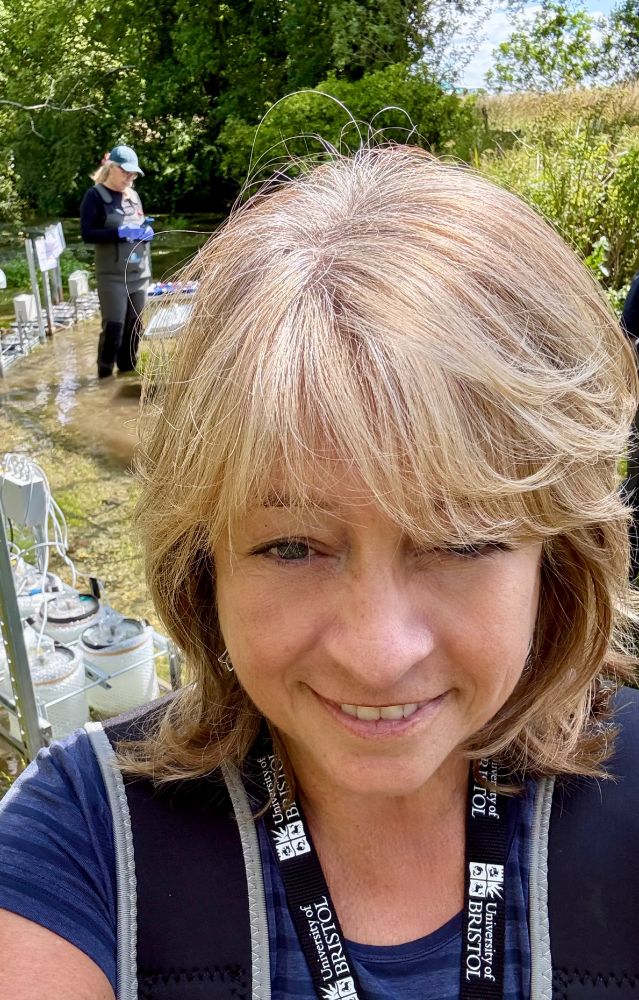
The PI @penny.johnes.bsky.social having rather too good a time. Science is always fun, but also often quite challenging when we are conducting experiments under environmental conditions. It's always a relief when the kit is in and working and the design is correct!
Follow the team @ercrefresh.bsky.social as we investigate controls on rates & pathways of DOM uptake into stream foodwebs. This week we ran the first of 3 experiments exploring if environmental character, warming or velocity affect uptake this week. Chalk stream first, then clay stream, then peat! 🧪
09.07.2025 15:23 — 👍 10 🔁 2 💬 0 📌 1